WooCommerce Pricing & Cost: How much does WooCommerce really cost?
This guide walks you through every cost component to unveil the true financial investment behind setting up and operating an online store with WooCommerce, helping you get a wise strategy for your e-commerce business.
WooCommerce Pricing: An Overview
WooCommerce itself is a free, open-source plugin that brings e-commerce capabilities to WordPress websites.
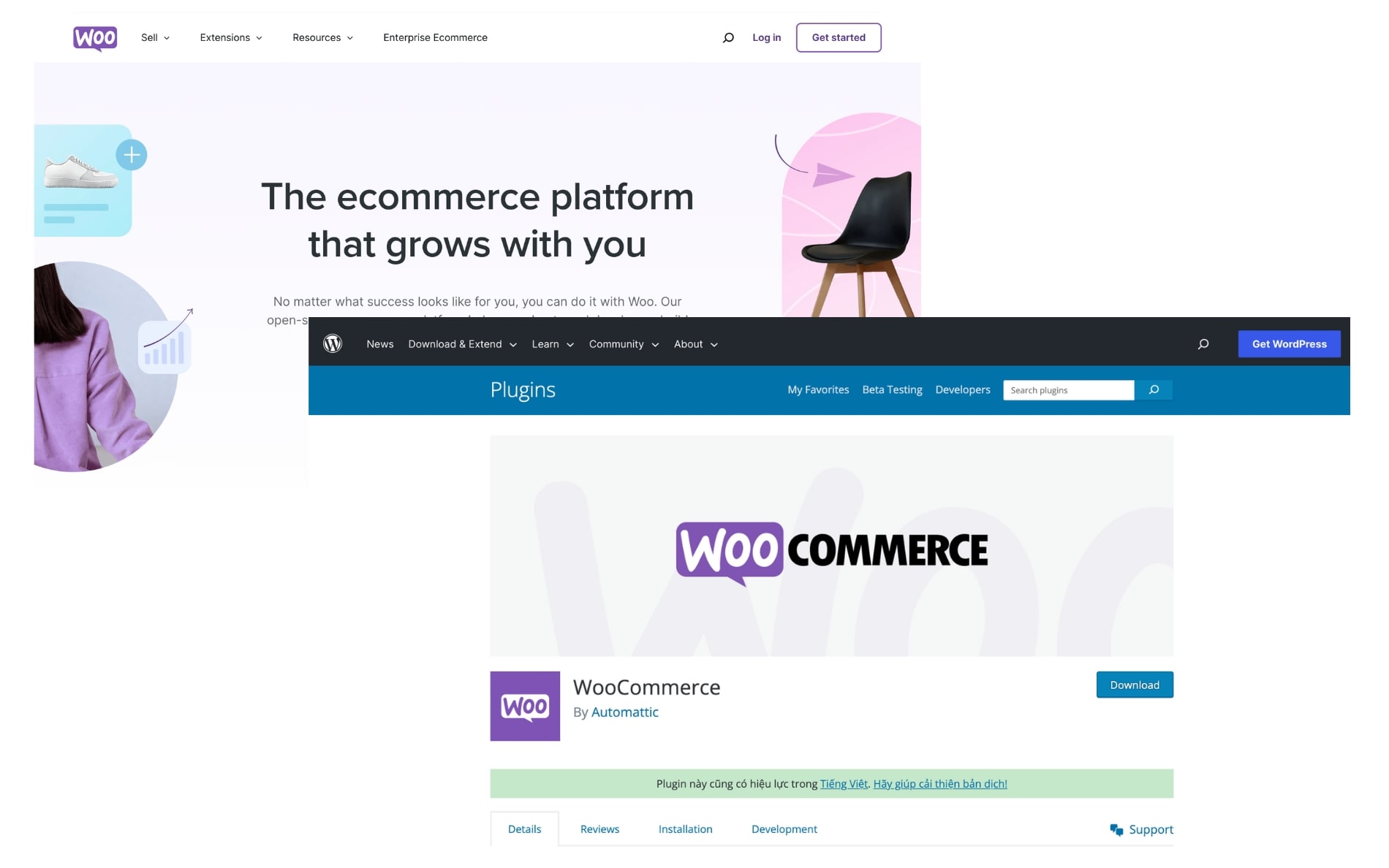
However, the term “free” can be somewhat misleading, as there are various associated costs required to set up and operate a live, fully functional WooCommerce store. These costs may include domain name ($0-$20/year), web hosting ($5-$40/month), SSL certificates ($0-$65/year), premium themes ($0-100/year), and additional plugins or extensions that offer specific functionalities your business might need. Payment gateway charges and potential developer fees for customization should also be factored into the overall cost.
In essence, while the WooCommerce plugin doesn’t come with a price tag, running an online store with it does entail certain inevitable expenses that vary depending on your Wordpress site‘s specific requirements.
WooCommerce Pricing: A Detailed Breakdown
Subscription fees (if using hosted WordPress)
Unlike self-hosted WordPress, where you can download and use WooCommerce for free, a hosted WordPress solution like WordPress.com may have different pricing tiers that include e-commerce capabilities powered by WooCommerce.
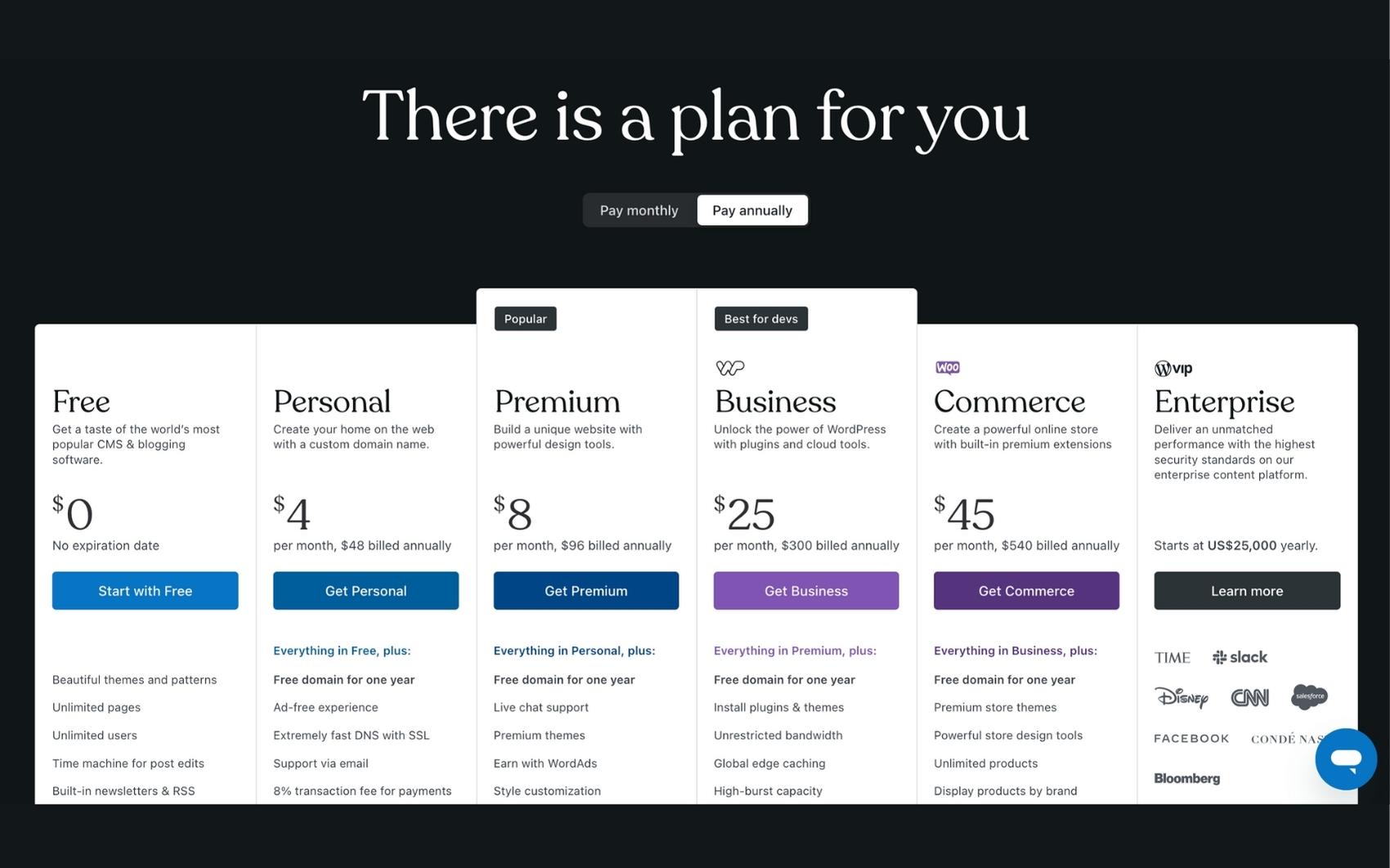
WordPress.com offers five pricing tiers, each designed for specific needs:
- Free plan: Ideal for personal use, this plan comes with 1GB storage and an SSL certificate but lacks email support and custom domain options.
- Personal plan: Priced at $4/month (billed yearly), this is also geared for personal use but adds a free domain for a year, 6GB storage, and payment collection options. * However, it lacks live chat support and premium themes.
- Premium plan: At $8/month (billed yearly), this plan targets freelancers and introduces features like Google Analytics and premium themes, although it misses out on advanced SEO tools.
- Business plan: Suitable for small businesses, this $25/month (billed yearly) plan offers extensive customization options, including access to over 50,000 WordPress plugins and 200GB storage, but lacks premium e-commerce options.
- Commerce plan: At $45/month (billed yearly), this is tailored for online stores, offering e-commerce tools and integrations with top shipping carriers, although it doesn’t have features like abandoned cart recovery.
Each plan has its pros and cons, with higher tiers offering more customization and business tools.
Hosting costs (if using self-hosted WordPress)
The primary cost for WooCommerce is web hosting. Every website requires hosting to be online. Among all WooCommerce expenses, hosting is essential and unavoidable.
Selecting an appropriate hosting provider for your WooCommerce site is vital, as it directly influences factors like speed, security, and uptime.
Costs for hosting can differ based on the provider and the specific features you require for your WooCommerce store. Typically, you can expect to spend anywhere from $5 to $40 per month on hosting.

Here’s a breakdown of the different types of hosting you might consider:
- Shared hosting: This is often the most economical option for small businesses or new websites. The costs can start as low as $3 to $10 per month, but performance might not be optimal for larger WooCommerce stores.
- Virtual Private Server (VPS): A VPS offers a better performance compared to shared hosting and is ideal for medium-sized stores. Costs generally range from $20 to over $100 per month.
- Dedicated hosting: If you’re running a large WooCommerce store and require high performance and control, dedicated hosting is the way to go. Prices typically start around $80 and can reach a few hundred per month.
- Cloud hosting: Offering scalability and reliability, cloud hosting costs can range from $10 to $100 or more per month, based on usage.
Some of the reliable hosting providers at the current time with reasonable prices that you can consider for your site are Bluehost, Dreamhost, SiteGround, etc. We highly recommend Bluehost, and we’re not the only ones. WordPress itself endorses Bluehost as a top choice with its Woocomerce plans starting at $9.95/mo (12 months contract)
Installing WooCommerce on your own is straightforward. However, Bluehost’s WooCommerce packages offer added convenience, providing pre-installed software and the versatile Storefront Theme. Plus, with Bluehost’s 30-day money-back guarantee, you can test a WooCommerce plan without any risk.
Themes
When setting up your WooCommerce site, selecting a theme is crucial as it dictates the visual experience for your customers. Themes can be sourced from WooCommerce’s official store (76 themes), the WordPress Plugin Directory (over 11,000 free themes), or various third-party vendors.
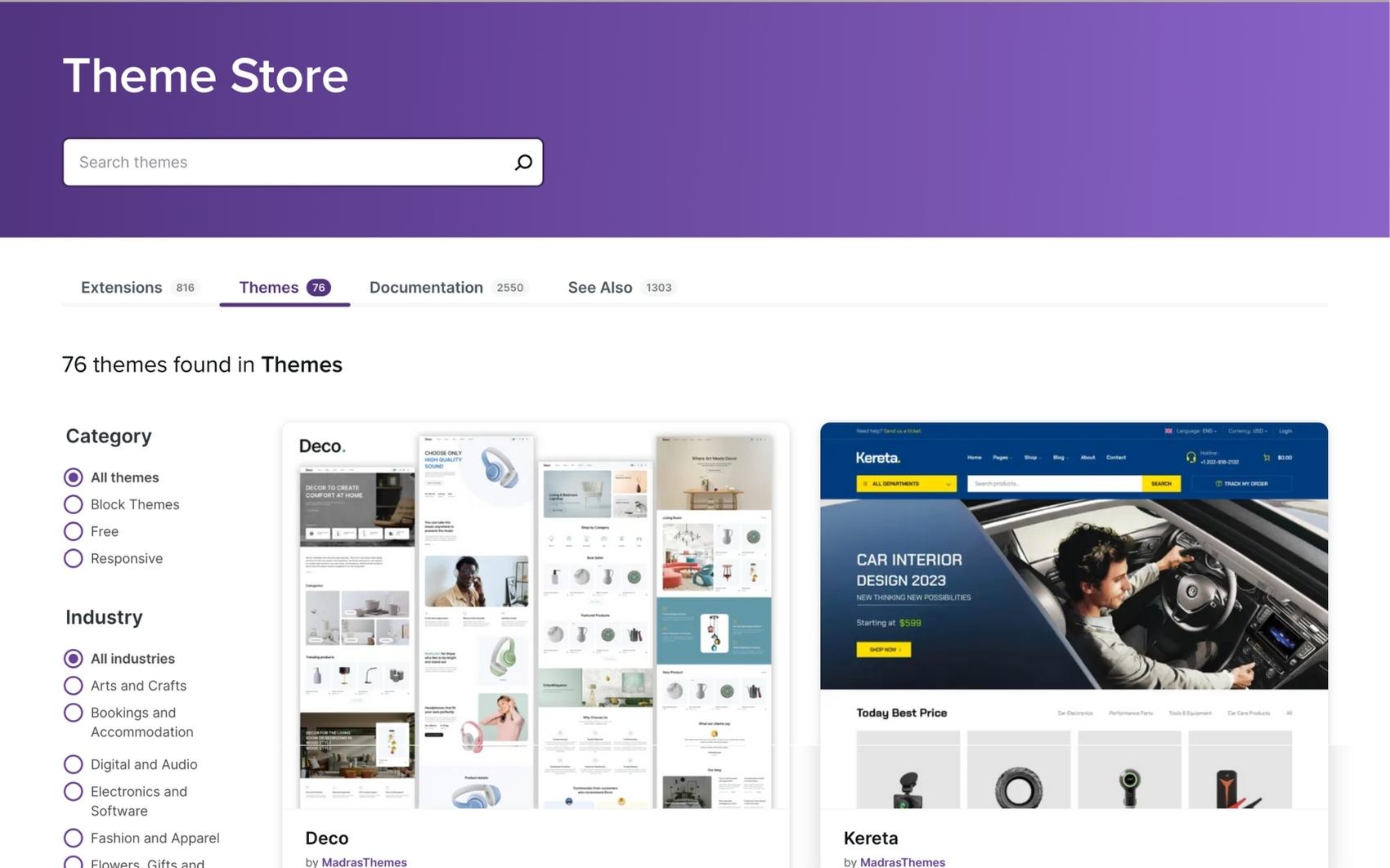
A great place to start is with WooCommerce’s Storefront theme. It’s free and highly customizable. While the Storefront theme is a top choice, you aren’t limited to themes from WooCommerce or WordPress. If you explore other free themes online, ensure they are recently updated and compatible with the latest version of WooCommerce. The theme “Storefront” is supposed to be a good choice for beginners with fully functional and can be customized to a certain extent.
However, if you’re looking for a more specialized or unique appearance, you may opt for premium themes, ranging from $20 to $100 per year.
Opting for a premium WooCommerce theme over a free one offers distinct advantages, including customer service support and regular updates. While free themes may offer limited assistance through a Q&A board, paid themes typically come with dedicated customer services.
Fees charged for maintenance by a developer/design agency
For small to midsize WooCommerce stores, hiring a web developer might not be necessary. Though developers can enhance your site’s design and functions, their high fees often don’t justify the benefits of smaller operations. However, outsourcing to a developer could be a wise choice if you have a larger site and are considering expansion.
The cost of maintenance for a WooCommerce site can vary widely depending on the specific needs of your online store and the agency or developer you choose to work with. Basic maintenance might include updates, security monitoring, and routine backups. For more involved maintenance, it may include custom feature development, SEO services, and personalized support.
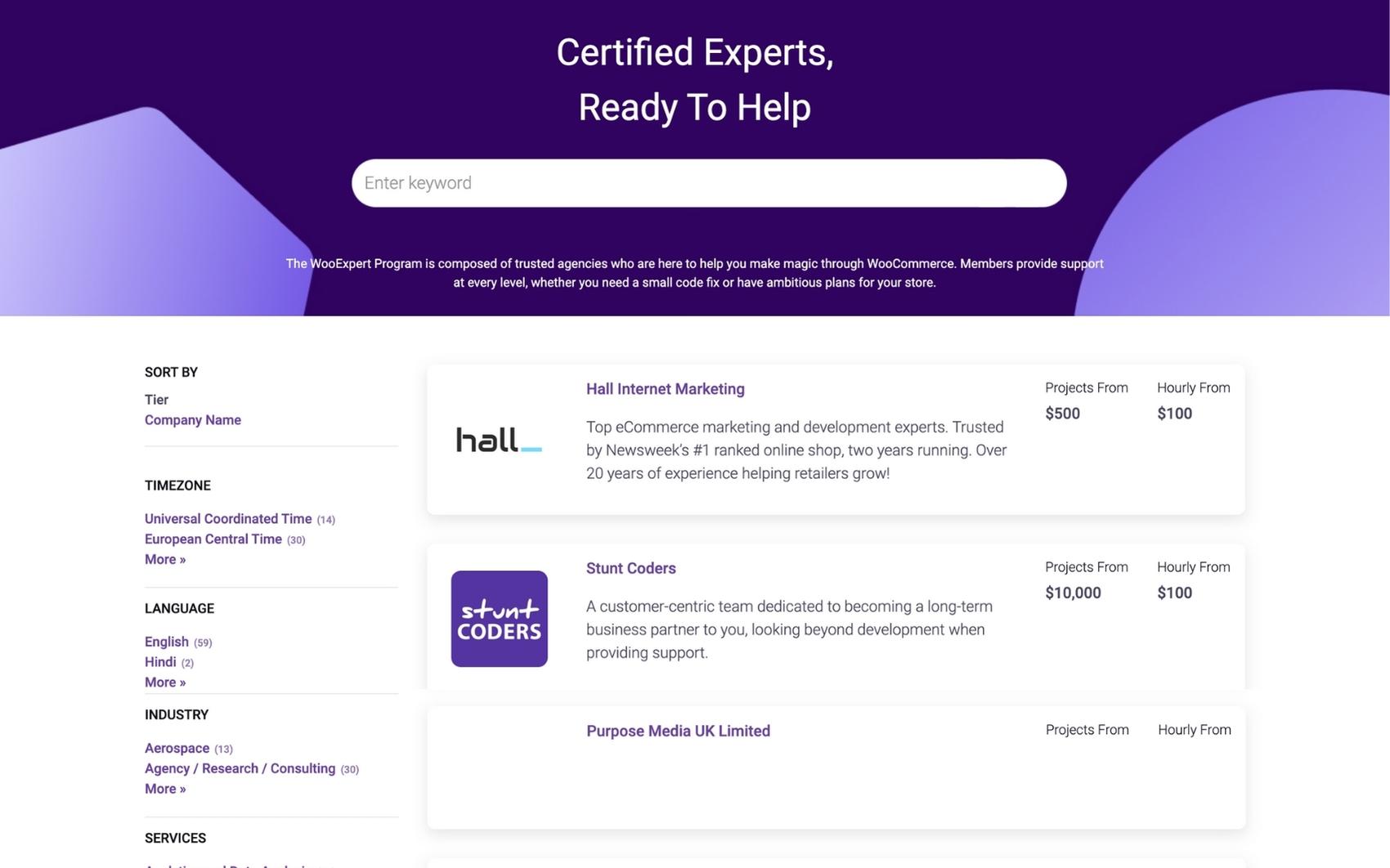
Developers can be engaged on an hourly basis to tackle specific tasks beyond their skill set, with rates fluctuating broadly from $10 to over $100 per hour. Alternatively, you can commission a developer to create your entire WooCommerce site from the ground up, which could cost between $1,000 and $15,000.
WooCommerce offers a curated list of highly skilled WooExperts proficient in both WordPress and WooCommerce to help streamline your site’s setup and operation.
Premium plugin fees
While WooCommerce offers various free extensions to enhance your store’s capabilities, the platform also provides options for premium plugins that come with a cost. These extensions can significantly enhance various aspects of your online store, including checkout processes, shipping options, and payment methods.

However, to be more specific, we will go through several indispensable services for any ecommerce store: payments, customer communication, and search engine optimization (SEO).
- For customer engagement, WooCommerce offers seamless integration with email marketing platforms like MailChimp and Jilt, with plans ranging from free to starting at $9.99 and $29 a month, respectively. These platforms help you recover abandoned carts, encourage repeat business, and offer comprehensive tracking metrics.
- As for SEO, tools like Yoast are invaluable for improving your site’s visibility on search engines. They come with free basic plans and offer premium upgrades for advanced features. These tools provide actionable insights and features that can significantly enhance your site’s SEO ranking. The paid plans start from $79/year normally.
- WooCommerce integrates with multiple payment platforms as extensions, enabling your online store to accept transactions through a variety of providers like PayPal and Stripe. While many payment extensions for WooCommerce are available, some may incur additional charges for extra features, like invoice generation or label printing. The payment costs have an average of 2.9% plus $0.30 per transaction, along with monthly fees ranging from $0 to $30.
SSL certificate purchases
SSL (Secure Sockets Layer) certificates are a key component of ecommerce site security, especially for WooCommerce platforms. They play a critical role in encrypting sensitive customer data during transactions, such as credit card information, ensuring it is securely transmitted between the user’s browser and your server.
In terms of cost, many hosting providers include an SSL certificate as part of their service package at no additional charge. However, if you find yourself with a hosting service that doesn’t offer a free SSL, you should be prepared to incur an extra cost ranging from $8 to $65 per year for the basic SSL. This cost is relatively minimal compared to the essential security benefits it provides, and it’s a non-negotiable feature for anyone serious about running an ecommerce site.
Failure to have an SSL certificate not only risks the security of customer data but can also negatively affect your site’s search engine rankings and overall customer trust.
Woo Express Pricing
WooCommerce has introduced Woo Express, an all-in-one and managed hosting solution built on WordPress.com’s robust infrastructure that no hosting is needed. This new offering takes the burden of hosting and maintenance off the shoulders of store owners.
Initially soft-launched to a select audience, Woo Express is now available to the public. It comes pre-loaded with a range of extensions and professionally crafted themes yet retains the flexibility of the open-source platform, allowing users to add any plugins or themes they prefer.
Woo Express offers two distinct plans, each tailored to meet varying levels of needs and equipped with a specific set of features.
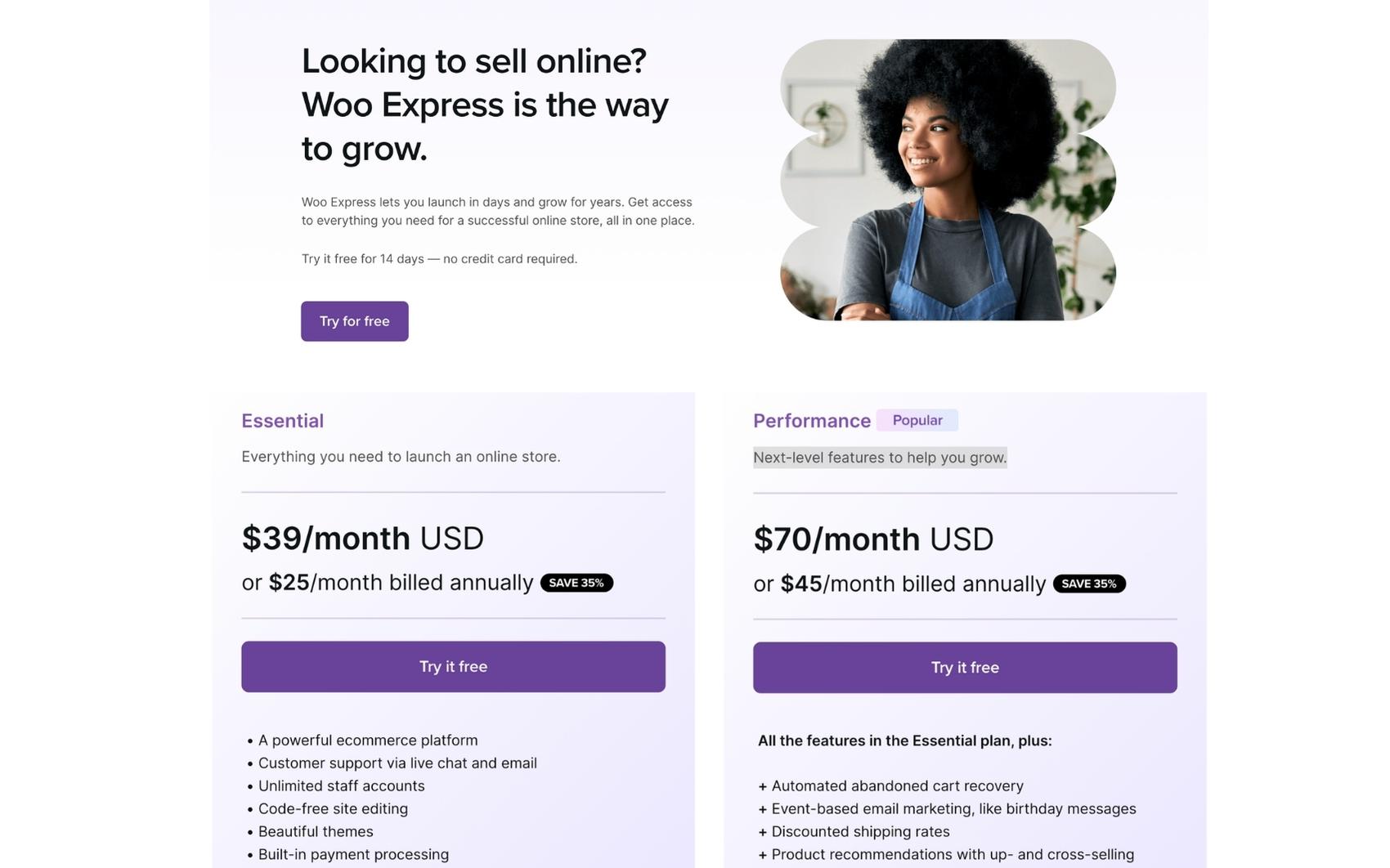
The Essential Plan, priced at $39/month or $25/month if paid annually, is ideal for startups and small businesses across retail, wholesale, or drop shipping.
Features include unlimited staff accounts, live chat and email support, premium themes, built-in payment options, automated backups, security scans, advertising tools, shipping and tax management, code-free editing, secure and fast hosting, mobile app access, a custom domain with SSL, and 50GB of storage.
The Performance Plan is available for $70/month or $45/month when billed annually and offers advanced features to support your business growth.
Besides all the offerings in the Essential Plan, it includes automated cart recovery, event-based email marketing, discounted shipping, product recommendations, back-in-stock notifications, personalized bundles, and customizable product quantity limits. The storage is capable of 200GB for product images and media.
The 35% annual billing discount is a limited-time offer and is subject to change at any moment.
5 Factors Influencing WooCommerce Pricing
Let’s elaborate on the critical factors determining the cost of operating a WooCommerce store.
Initial Setup and Hosting Expenditures
WooCommerce operates as a WordPress plugin, meaning you’ll need a WordPress-powered website and a reliable hosting service to get your online store up and running. Your hosting service will ensure that your website is accessible to a global audience 24/7.
Some of the well-known hosting services for WordPress include Dreamhost, SiteGround, and Digital Ocean. Each of these offers various plans that come with different pricing models tailored to different needs and sizes of businesses.
There are several additional costs to consider:
- Domain registration: Although some hosting plans bundle in a free domain name, some others require standalone costs.
- SSL certificate: Essential for secure online transactions, depending on the provider and package.
- Managed WordPress hosting: This is a premium service that includes website monitoring, regular updates, and customer support, often at an extra charge.
Investment in Design and Themes
Investing in a premium theme often comes with the requirement of annual renewals to maintain access to updates and customer support. These updates are not just aesthetic; they are vital for the continued performance, security, and compatibility of your WooCommerce store.
Financially, these renewals represent a recurring cost, depending on the specific theme and its developer’s pricing model. Failing to account for this recurring expense could potentially disrupt your budget and overall operational costs.
Therefore, it’s important to consider theme renewal fees as a part of the ongoing operating expenses that affect the total cost of running a WooCommerce site.
Ongoing Operating Expenses
While the WooCommerce plugin itself is free, the ecosystem around it, including hosting, themes, and plugins, comes with its own set of costs. For instance, specialized plugins and extensions, crucial for enhancing store functionality, often come with monthly or annual subscription fees. These could include payment gateways, SEO optimization tools, and customized shipping options, which can range from modest to premium pricing levels.
Then there are the ‘soft costs,’ including but not limited to, content creation and marketing. Maintaining a blog, updating product listings, and running ad campaigns are continuous activities that either consume your time or require additional human resources.
Cost for Professional Help
Even for those with a degree of technical know-how, it’s often necessary to enlist professional help for specialized tasks. These can include SEO optimization, custom coding, high-quality graphic design, and many more, each of which comes with its own set of costs. For instance, professional SEO consultation is crucial for enhancing your online visibility on search engines.
Depending on the complexity and scope, these services can cost anywhere from a few hundred to several thousand dollars per month. Similarly, custom development work for specialized functionalities can be quite expensive. Developers usually charge hourly rates depending on their expertise and the complexity of the task. Graphic design is another expense to consider, covering everything from logo design to product photography.
The costs for these services can vary widely, but they are essential for establishing a cohesive and appealing brand image. All these specialized services contribute to the overall expenditure of running a WooCommerce store.
Security Measures and Other Ancillary Costs
Prioritizing robust security is essential when you operate an online store that handles sensitive customer data and financial transactions. This necessity extends beyond basic precautions to include specialized tools such as Web Application Firewalls, which help fend off hacking attempts; regular malware scans to ensure your site remains free from harmful software; and data encryption protocols to protect customer information.
The cost of implementing these security measures can quickly add up. Services often charge a monthly or annual fee, depending on the level of security you require. These are not optional expenses but critical investments to maintain trust and operational integrity.
As such, they constitute a significant portion of ongoing operating costs and should be factored into the overall budget for running a WooCommerce site.
WooCommerce Pricing: Summary table
Wrapping up, here is a table that generally illustrates the mandatory costs for users when considering WooCommerce for their businesses.
| Criteria | Price |
|---|---|
| Subscription fee (hosted WordPress) | $0 - $45 per month |
| Hosting | $5 - $40 per month |
| Domain | $0 - $20 per year |
| Themes | $0 - $100 per year |
| Premium plugins | Payment:
|
| Hiring experts | $10 - $100+ per hour |
| Security | $0- $300 per year with tools $0-$65 per year with SSL Certificate |
FAQs
The initial and ongoing investment in hosting, themes, plugins, and possibly professional services like SEO and custom development can yield a high return if your store performs well. Remember, the success of any eCommerce store also relies heavily on the quality of the products, customer service, and marketing efforts.





